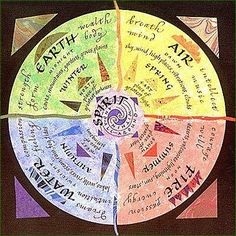
Ayurveda is based on the premise that the universe is made up of five elements: air, fire, water, earth and ether. These elements are represented in humans by three “doshas”, or energies: Vata, Pitta and Kapha. Any imbalance of these elements in our body is experienced as illness, discomfort or pain.
The five elements come together in each person in a different combination. And so each person is slightly different from every other person in their mixture of elements and in that way they balance themselves. The three doshas govern all the strategic activities of our lives:
•Catabolism (vata) - Vatas are normally thin and wiry. Vata is the force that governs all movement in the body. When in balance, it gives enthusiasm for life, clear thinking, intuition, playfulness, and creativity. In excess, though, it can manifest as pain, lack of appetite, tremors, coldness, constipation, anxiety, arthritis, racing thoughts, insomnia, and more.
• Metabolism (pitta) - Pittas are usually of medium size and weight. They have a powerful intellect and a strong ability to concentrate
• Anabolism (kapha) - the most stable of the three doshas, being composed of Water and Earth. It is present as the structural components of the body such as the bones, muscles, and adipose tissue. It is also present in the mucous membranes, and the marrow that fills the bones. Kapha people are blessed with great stamina, but they need motivation to get moving.
The key to balancing Kapha is to keep moving. Ayurveda considers walking a tridoshic exercise: it balances all three doshas without putting excessive strain on your body. It calms the mind and nourishes the senses. To balance Pitta do not skip meals and laugh a lot.
Both yoga and ayurveda have their origin in the Vedic tradition of India, and both are a means to gain better health.
